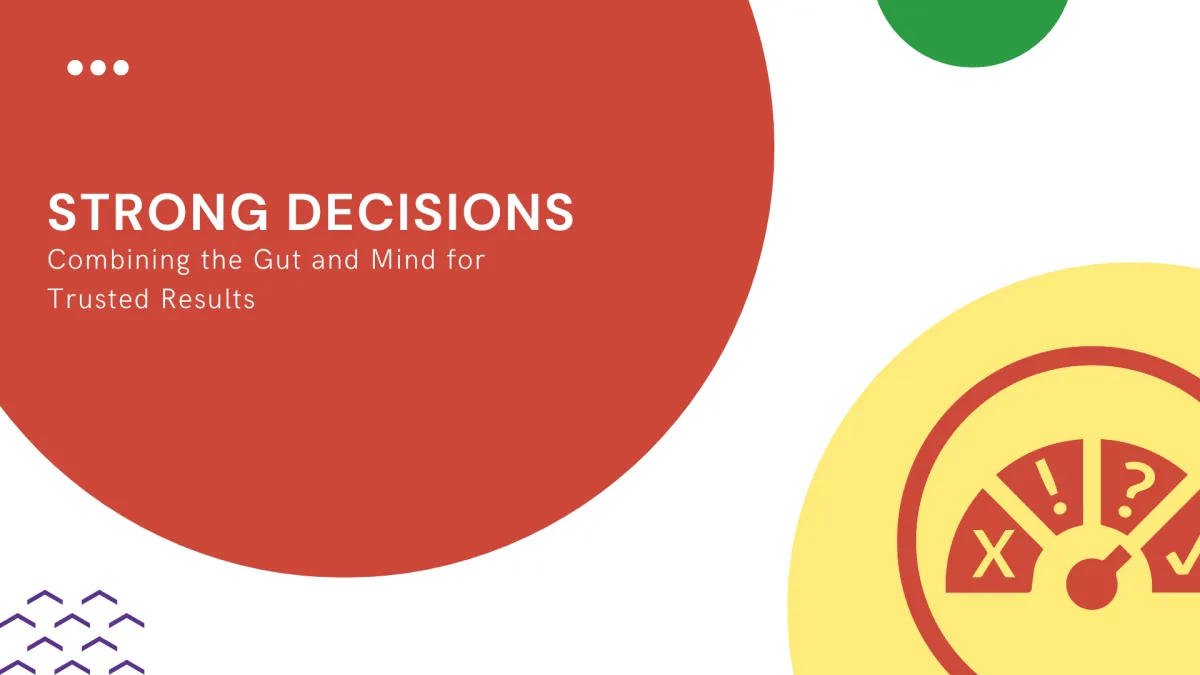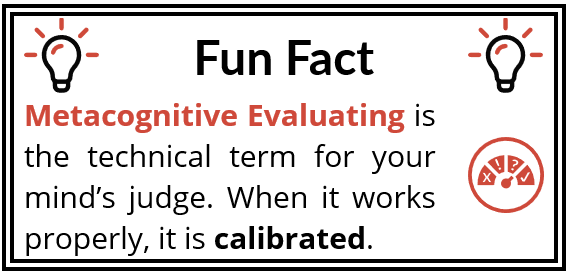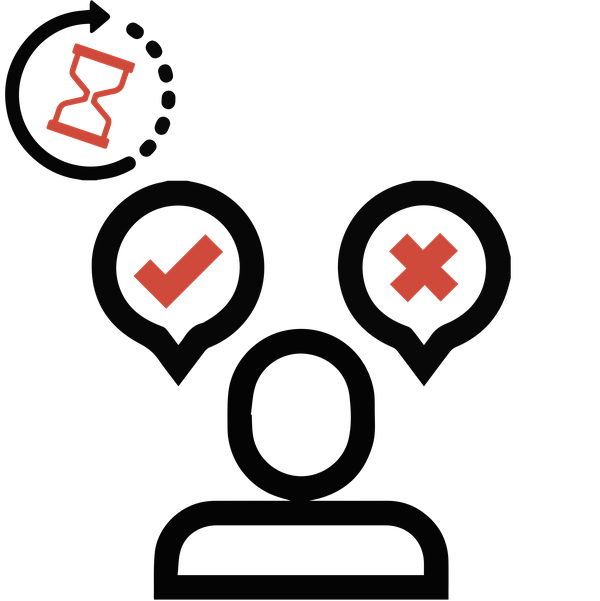
Strong Decisions
Strong Decisions
Combining the Gut and Mind for Trusted Results
July 1, 2024; By: Justin Teeuwen
Imagine the following scenarios: An owner receives an offer to buy out the company. A team of three executives is deciding whether to invest in leadership programming or marketing. A manager needs a new hire within the next month for a crucial role.

Whether you are a business owner, hold a top seat on your senior leadership team, or work to fulfill the needs of your company, you make big decisions every day. There are many known strategies you could use when making your decisions – do you invest rely on data, or your gut instinct? In other words, what is best for your judge?
It is normal to trust your gut instincts when making decisions – but our first impressions are often wrong1. The brain makes 37 unique errors, known as cognitive biases, in addition to random mistakes2. But, taking time to collect careful data may not always feel like a possible, or desirable option. So, what is the best way to act on judgment?
The answer lies in the middle.
We can control for the mistakes of the mind by collecting just enough data before we turn it over to our gut. A process known as Mediating Assessments Protocol (MAP)2 is one-such solution. It follows three simple steps:

Define your key attributes. This must be done before you evaluate so you focus on what is important.

Use fact-based, independent evaluations. Collect and measure evidence around the key factors only.
PRO-TIP: Use percentiles for less-‘noisy’ (i.e., more accurate) evaluations. Percentiles are ratings compared to an agreed-upon frame of reference. These reduce errors from qualitative judgments.

Make your decision after reviewing. Taking time to weigh-in once you have collected all of your data for the key characteristics.
Using this process helps you get the most out of your evaluator – you get the essential facts, and rely on your instinct to select the appropriate pathways.
For example, an owner could first identify key issues of value, impact on staff, and changes to lifestyle. Then, they could collect: the purchaser’s goals, staff reactions to the idea of sale, and identify goals for the future time and money. With each measured on their own, all ratings could then be examined holistically to make a final decision that is both informed and intuitive.
To learn more about training your evaluator, set up a free 30 minute consultation with a Meta Coach.
1Kahneman, D., Lovallo, D., & Sibony, O. (2019). A Structured Approach to Strategic Decisions. MIT Sloan Management Review, 60(3), 67–73.
2Arnott, D. (2006). Cognitive biases and decision support systems development: A design science approach. Information Systems Journal, 16(1), 55–78. https://doi.org/10.1111/j.1365-2575.2006.00208.x
